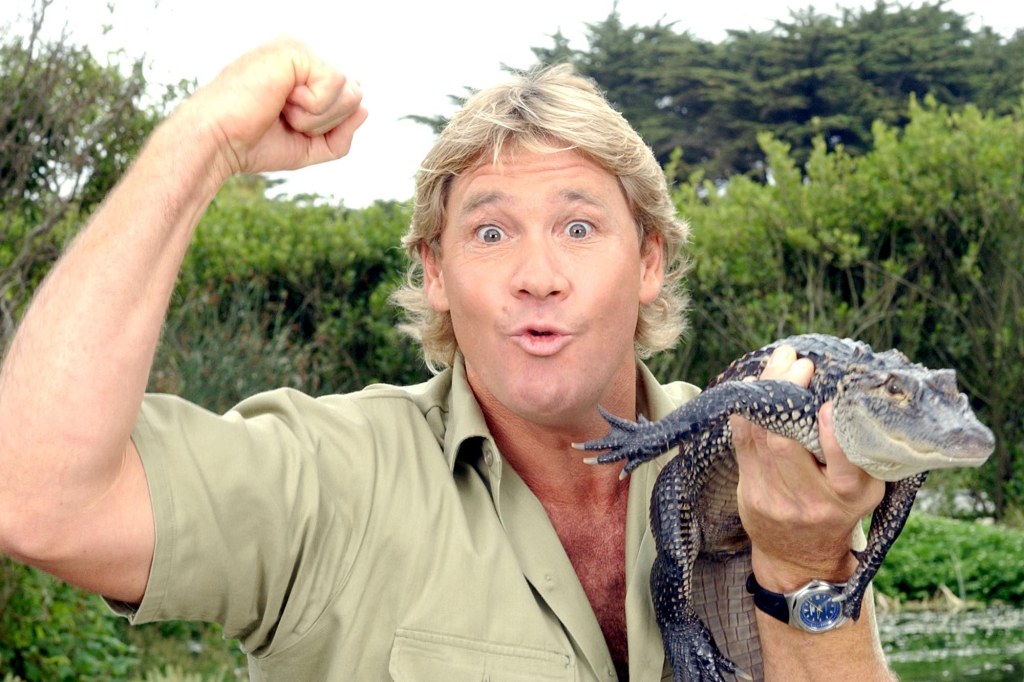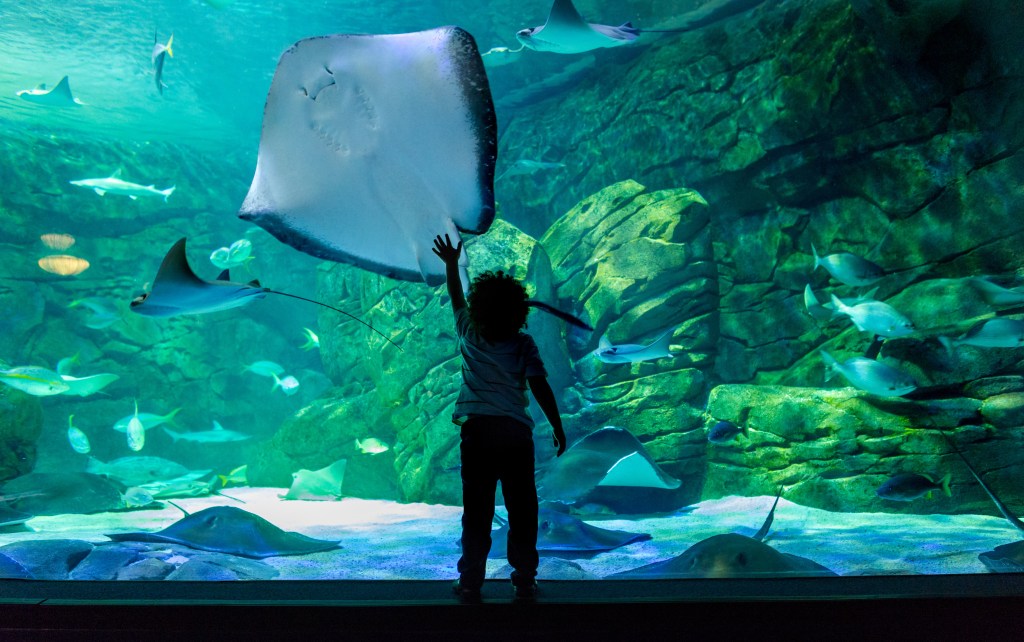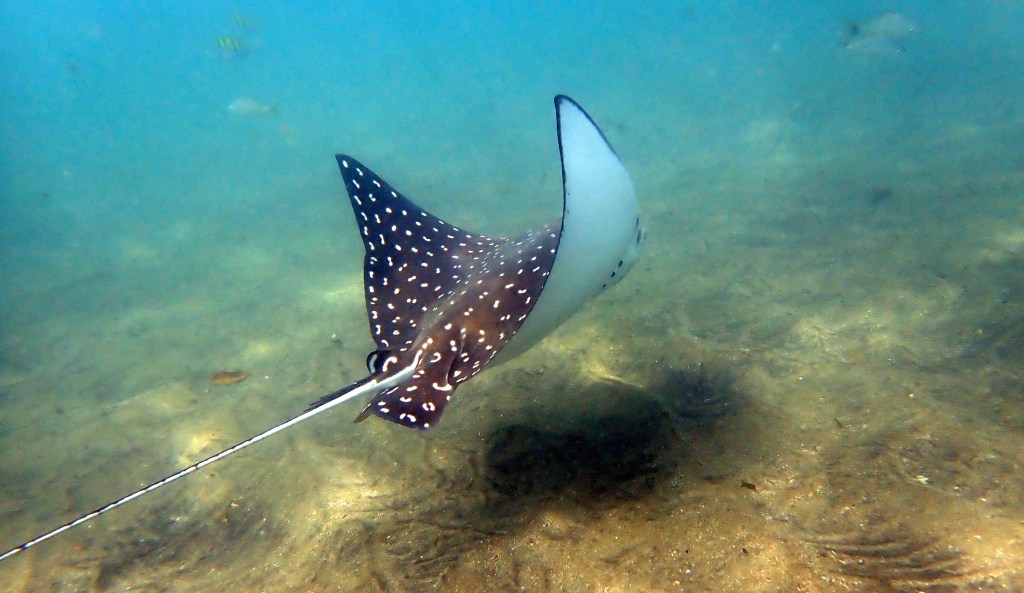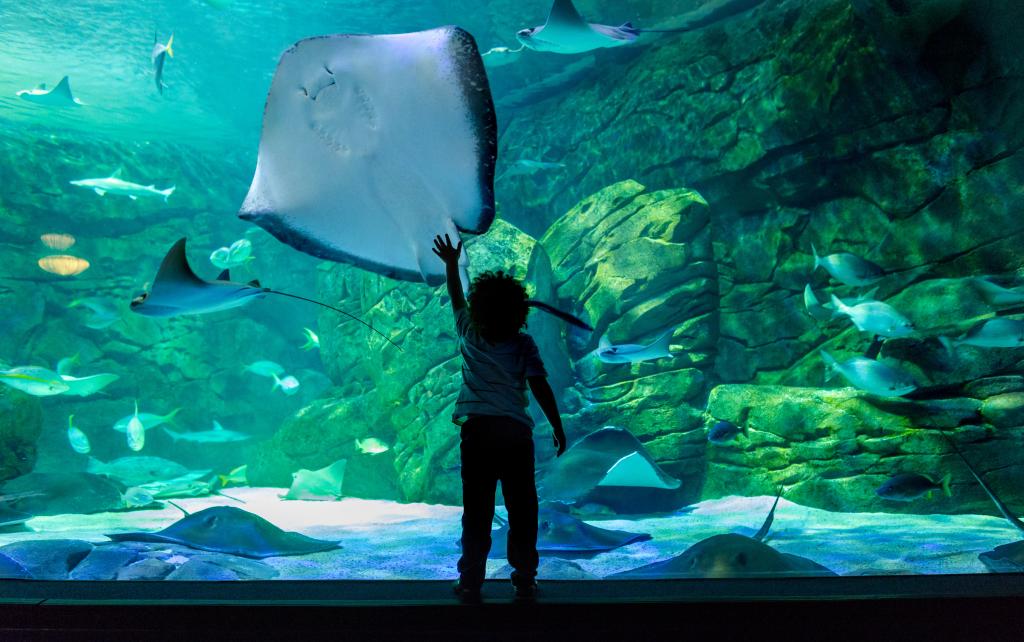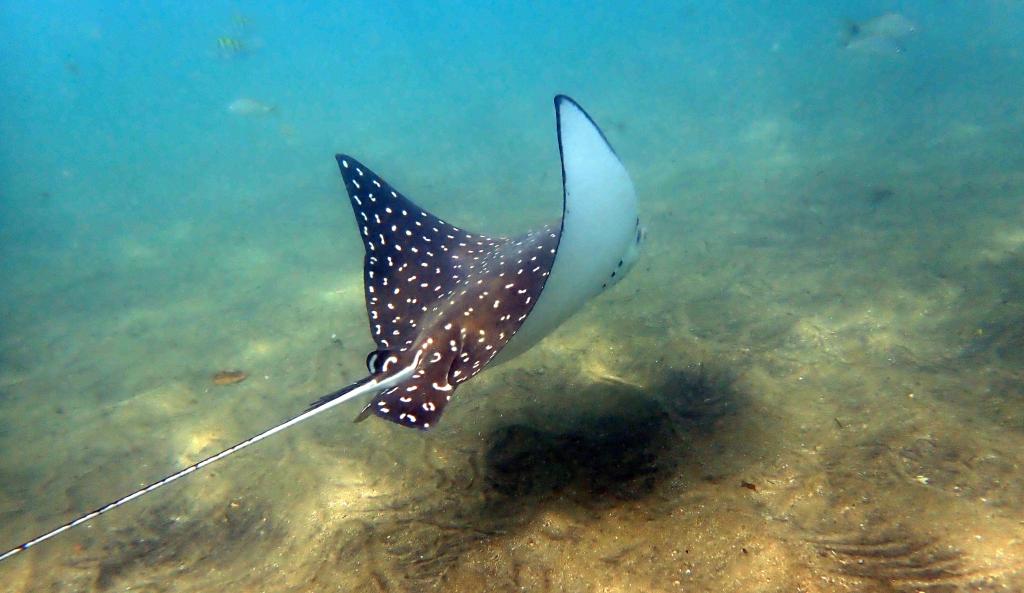Tragic stingray misunderstanding 18 years after Steve Irwin’s death remains
September 4, 2006 is a date that will live in infamy in the hearts of many Australians – the day Aussie icon and conservationist Steve Irwin died, killed by a stingray while filming on the Great Barrier Reef.
It’s a death that sent shockwaves around the world as The Crocodile Hunter was a global brand with legions of fans from across the globe.
Even today, nearly 18 years later, it’s a death that hits plenty of people hard — and has classed stingrays as deadly and dangerous.
It’s something that momentarily crossed my mind when I was sent for a stingray experience on a recent assignment to New Zealand.
But what I found was the complete opposite and a new appreciation for a tragically misunderstood animal.
Stingrays are prevalent across Australia and New Zealand with the animals living in coastal waters and in warm and tropical areas and migrating in cooler months.
While stingrays have the ability to kill with their barbs, reportedly fewer than 20 people have been killed worldwide by stingrays since 1945, with just five in Australia.
To put it into perspective, 91 people died falling out of bed in Australia in 2022, according to the Australian Bureau of Statistics.
More common are injuries from the stingray barbs, which release a complex venom that is painful if struck, but the injuries are generally treated with hot water immersion, unless there’s a deep puncture.
It is recommended if you are stung by a stingray to seek medical attention as it may also require a tetanus shot or an inspection to ensure none of the barb remains in the injured area.
But in the wild, more likely the old adage “they’re more scared of you than you are of them” comes to mind.
Often the biggest issue is stingrays being stepped on by people, or the stingray getting a fright and feeling it needs to defend itself.
It makes experiences like those offered at Dive Tatapouri just outside of Tairāwhiti Gisborne all the more special.
Christine Savage, who runs the business alongside her husband Dean, said even nearly 20 years later, the Steve Irwin effect is still in place.
“It has been over the years, we have had people ask about it,” Ms Savage told news.com.au.
“(Stingrays) have been given such a bad rap over the years with different things, I think we all forget sometimes we going into their space and we need to be respectful of all of that and the fact that they’ve come to us to say hello.
“If they want to come up to us, they want to come up if they don’t, we need to respect that.
“Some of them decide to when they want to. Otherwise if they’re not comfortable, or they think they’re going to get beached or whatever reason, we’ve just got to let them be, they’re wild.
“As a species, if you’re a diver or a snorkeller, in most cases, unless you fly off the edge of the reef or something and scare them, most of them will just tool away, they’ll just disappear.
“You won’t even know they’re there half the time.”
It’s why the public perception of stingrays as inextricably linked with the death of Irwin is such a tragedy
Ms Savage knows about stingrays all too well having run Dive Tatapouri since 2000, before her husband Dean decided to work with the animals.
She said the tragic events of Irwin’s death have given rise to the biggest misconception about stingrays.
“I do think it’s around that whole how dangerous they are and that they can kill you and all the rest of it,” Ms Savage said.
“And they do have the capacity to do that but the last thing they want to do is lose their barb. It’s their main line of defense.
“You’ve got to really upset one or really scare it or stand on it and completely be in the wrong place to be killed by one unfortunately. It’s sort of like going in surfing with sharks.
“You’re seeing a few more shark attacks but you’re pretty unlucky to be killed by a shark. It’s not something the stingrays are out to do. They’re not hunting you.
“It’s just that you’ve unfortunately come across it and scared it and it’s put up its own defense mechanism up. That is the perception I suppose.”
The day I walked with the stingrays, there was a group of around 20 of us and it was clear some were more nervous than others.
Although it was a near perfect day, the water was quite choppy and cloudy, meaning the stingrays and eagle rays seemed somewhat more hesitant to come up to us.
But after some coaxing from our guides, several came in, allowing us to pat them and even feed them.
When entering the water, we were instructed to stay close to one another throughout the tour as the eagle rays, which are more triangular than the rounder stingrays, can get their heads stuck between people.
Start your day with all you need to know
Morning Report delivers the latest news, videos, photos and more.
Thanks for signing up!
If they wanted your attention, they’d ram into your shins – not hard, but enough to know they were there.
Some also showed off their cheeky side, swimming behind the group.
The stingrays, on the other hand, look like they’re climbing you, sucking on your waders, something we were warned before the experience began.
What was clear was there was nothing to fear from these beautiful creatures, as long as they’re treated with respect, like with any wild animal.
“They do have their own little personalities,” Ms Savage said.
“Our guides know them by name, because each one has a little, a little sort of personality. Like today we had Layla, she was playing up a bit. Normally she can be a bit like that, but she was really bad today.
“Charli comes in and she just loves to come up to the guides and give them a big love bite, a bit of a suck on their leg. But we know she’s like that, she’s just one of those rays. And so they know how to deal with her.
“And some of the eagle rays aren’t that keen to come right up because they’re younger, and a bit more nervous. They know the ones that they can lift them slightly out of the water. The others they wouldn’t even try it was because they know that they just don’t like it.”
Another interesting titbit Ms Savage divulged was that after Covid, the guides were excited to get back in the water and asked to go into the water without their waders on.
But the rays didn’t like it and would only approach when the guides had their waders on, revealing their natural shyness.
As for the visitors, Ms Savage said there are all sorts of people who come through the door, ranging from those who put on a brave face until they get in the water, to those who have genuine phobias, to those who love stingrays, to those whose only link to stingrays is via Irwin.
“You do get some that are obviously trying to overcome the fear,” Ms Savage said.
“We’ve had people crying as they go into the water. We’ve had others come out crying because they have loved the experience and felt so touched by it all.
“So a real mixture of emotions actually.”
For those who can’t help but think of Irwin when stingrays are mentioned, getting to meet stingrays and eagle rays up close – pat them, feed them and learn about them from people who work with them every day – will give you a new perspective on these misunderstood creatures.








